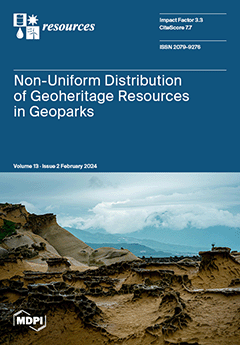Coffee processing generates a large amount of organic waste, which has the potential for energy use through biogas production. Although Brazil dominates world coffee production, treating its residue with biogas technology is not a practice, especially due to this product’s seasonality, which hampers
[...] Read more.
Coffee processing generates a large amount of organic waste, which has the potential for energy use through biogas production. Although Brazil dominates world coffee production, treating its residue with biogas technology is not a practice, especially due to this product’s seasonality, which hampers continuous digester operation. The implementation of biogas production from coffee residues in a concept of industrial symbiosis could overcome this. This work evaluates the biogas energy potential from the main liquid residues of coffee processing (i.e., mucilage and wash water) and their integration with glycerin and cattle manure. Around 2773 m
3 biogas day
−1 would be produced (75% CH
4), used as biomethane (734 thousand m
3 year
−1), or thermal energy (23,000,000 MJ year
−1), or electricity (2718 MWh year
−1), which could supply, respectively, all the liquefied petroleum gas (LPG) and diesel demands of the farm, all the thermal energy demands of the grain drying process, as well as electricity for 30 residences. Considering the short coffee season, the results have a broader context for the application of biogas production on coffee processing farms, envisaging that the Agroindustrial Eco-Park concept has the potential to integrate various agroindustrial sectors for energy production, residue exchange, and water recirculation.
Full article





